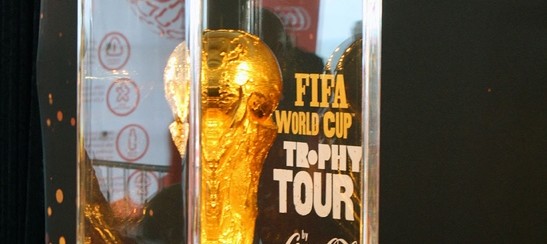Sports Biomechanics in the World Cup
World Cup fever is here! As the best players in the world battle for supremacy on the world stage, we see players give everything in harsh, humid conditions. What’s going on during these matches? Why are injuries seemingly so frequent? It looked as if everyone on the US squad was struggling in its Ghana match.
So what’s the deal? What’s happening? And how to avoid injuries?
While soccer might seem pretty simple on the surface considering it has 2 critical components, running and kicking, the sport is a grueling test of athleticism for 90+ minutes.
Most sports have built-in rules to allow its players rest and recovery. A football player has 40 seconds between each play, and typically focuses on one aspect — offense or defense. This allows the football player rest when the other side of the team is on the field. Football, then, becomes a game focused on the sprint and the immediate strength in a one-on-one battle. While basketball has the shared responsibility of offense and defense like soccer, there are unlimited substitutions and built-in rests on a quarterly basis.
Soccer, on the other hand has one rest at halftime (with the exception of the water break in the USA-Portugal Game!), and only 3 substitutions, meaning 8 players must be ready to run all game.
Running, Running, Running
Running form plays a big part in successfully enduring game conditions and performing to win. And sadly, most people don’t take the second to pause and consider the form and mechanics of what they’re doing. As such, they continue to repeat the same mistakes and form bad habits.
When it comes to biomechanics, it is important for your running form to move from a stage of unconscious ineffectiveness to a level of consciousness about what needs to improve before finally moving to a place where you unconsciously use effective form.
The biomechanics of running involve your entire body. Your posture; the position of your head; use of shoulders, arms, and hands; hip movement; stride length and rate; your gait; and foot plant and position. All of these aspects together form your functional running movement and all of them ought to be observed to ensure consistent and quality performance.
Free Kick
On the other side, a soccer player must use his or her feet.
Much like the biomechanical aspects of running. The critical difference between the kicking motion of a recreational and high performing athlete resides in the consistency of the action. For accuracy, power, and bend, an athlete must use repeatable motion so he or she can expect similar results after each kick.
An effective kick uses the torso, both hips, both knees, and both ankles in specific actions. It requires an approach to the ball, a plant foot, a leg swing from the opposite leg, hip bending, knee extension, contact, and follow through. Biomechanical factors vary depending on the foot used, and the type of kick used — i.e., through the laces, side-foot, etc.
Misuse of your kicking motion might create a hamstring strain or an ankle issue. The best possible action is to come in and let us assess your motion to ensure functional viability.
World Cup means soccer takes a center stage in popular culture for the next month. But these players will never make it to this world stage without precise analysis of the biomechanics of their trade. If you’re interested in considering your soccer biomechanics, let us know!



